
Fiesta Aquí, Fiesta Allá: Music of Puerto Rico
Lesson 3
Música Jíbara: Aguinaldos and Fiesta de Reyes

What is Aguinaldo
Puertorriqueño?
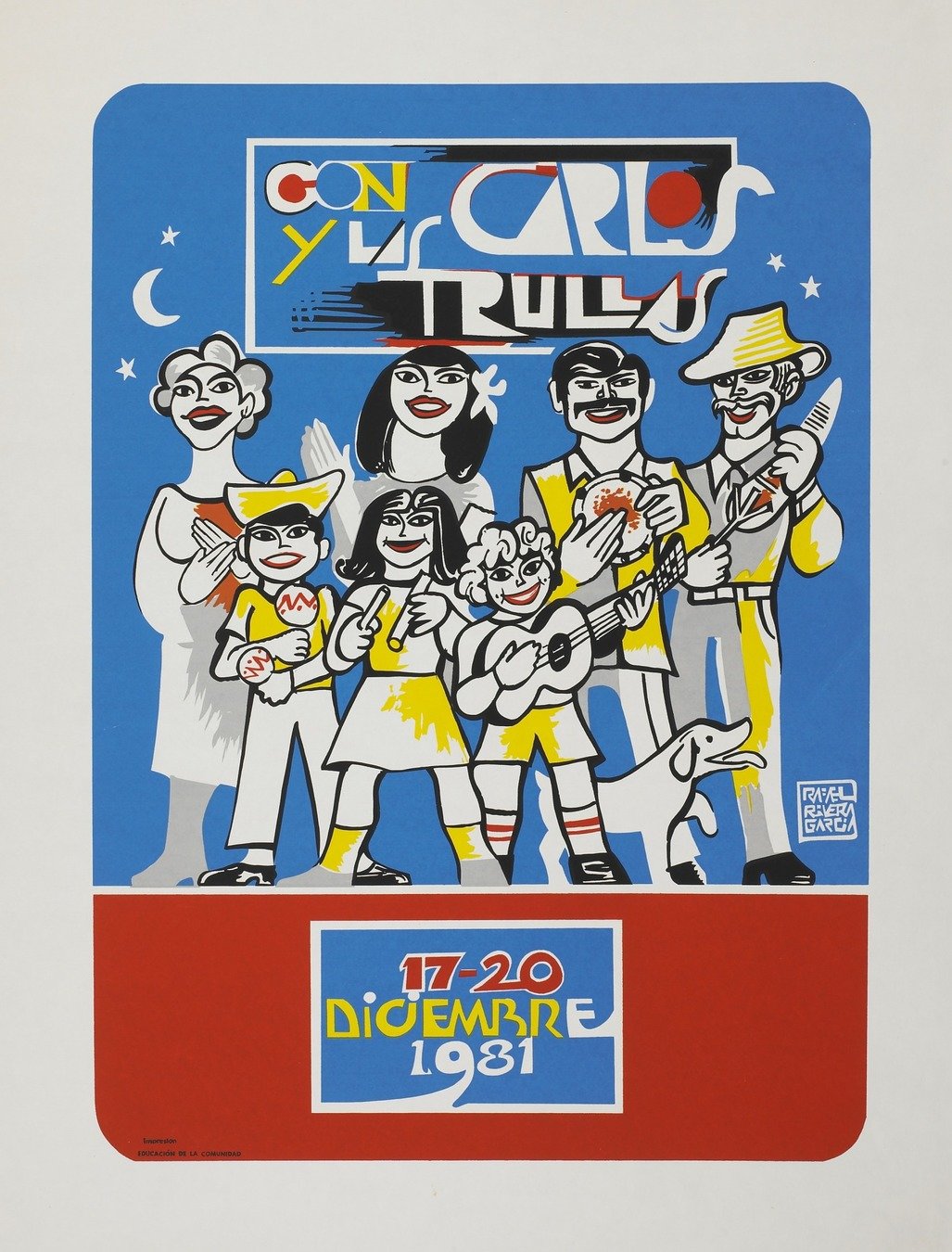
Con Carlos y las Trullas, by Rafael Rivera Garcia. National Museum of American History.
Lesson Hub 3:
Música Jíbara: Aguinaldos and Fiesta de Reyes
by Edwin Porras

Música Jíbara: Aguinaldos and Fiesta de Reyes
HISTORY & CULTURE
MUSIC LISTENING
30+ MIN
30+ MIN
20+ MIN

MUSIC MAKING
Aguinaldo and the Fiesta de Reyes Scene
Path 1

30+ minutes
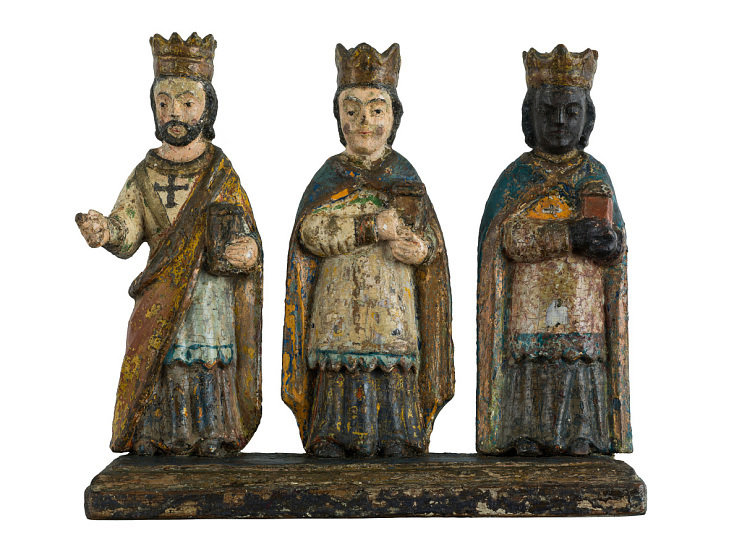

Los Tres Reyes Magos, by the Rivera Group. National Museum of American History.
Attentive Listening


Does this song sound like a Christmas carol? Why or why not?

Christmas, Christmas Celebration, by Marius Iordache. CC0, via Pixnio.

What is Aguinaldo?
The song you just heard ("Christmas Carol,") is an example of aguinaldo.

In Puerto Rico, this term refers to a type of song and also to presents and offerings.
Puerto Ricans often sing aguinaldos as musical gifts during the Christmas season.

Three Kings Playing an Aguinaldo, photo by Dr. Rolando Emmanuelli-Jiménez. CC BY-NC-ND 2.0, via Flickr.
What Is Música Jíbara?


Música Jíbara is:
- a broad term for Puerto Rican folk songs from mountain regions and rural areas
- an oral tradition
- a fusion of Taíno, Spanish, and African music
- influenced by Spanish poetic forms

Jíbaro Hasta el Hueso: Mountain Music of Puerto Rico, cover art by Marlow Palleja Design. Smithsonian Folkways Recordings.
Season of Celebrations!

In Puerto Rico, Christmas (Navidad) season is celebrated from the first week of December to January 13 (six weeks!). Some highlights include:
- Christmas Eve and Day
- New Year’s Eve
- Fiesta de Reyes (Epiphany): January 6 for the Three Magi
- Octavitas (eight days after January 6, Three Kings celebrations also occur during this period


Programa de Navidad, by Antonio Maldonado. National Museum of American History.

Fiesta de Reyes Scene: Christmas Day
Many families gather together on Christmas Day to eat typical dishes and give presents.


Adoration of the Shepherds, by Mattias Stomer, {PD-Art|PD-old-100}, via Wikimedia Commons.
Around Christmas Day, Catholic mass services (misa de aguinaldo) are celebrated with aguinaldos.

Fiesta de Reyes Scene: Offerings and Presents
In Puerto Rico, children receive additional gifts on January 6 (Día de Reyes/Epiphany).
- They are delivered overnight by the Three Magi (Kings).
- On the eve, children leave grass in shoeboxes for the Magi’s camels.
- The next morning, they wake up to find the gifts left by the Kings.

Santos from Puerto Rico, unknown artist. Cooper Hewitt, Smithsonian Design Museum.
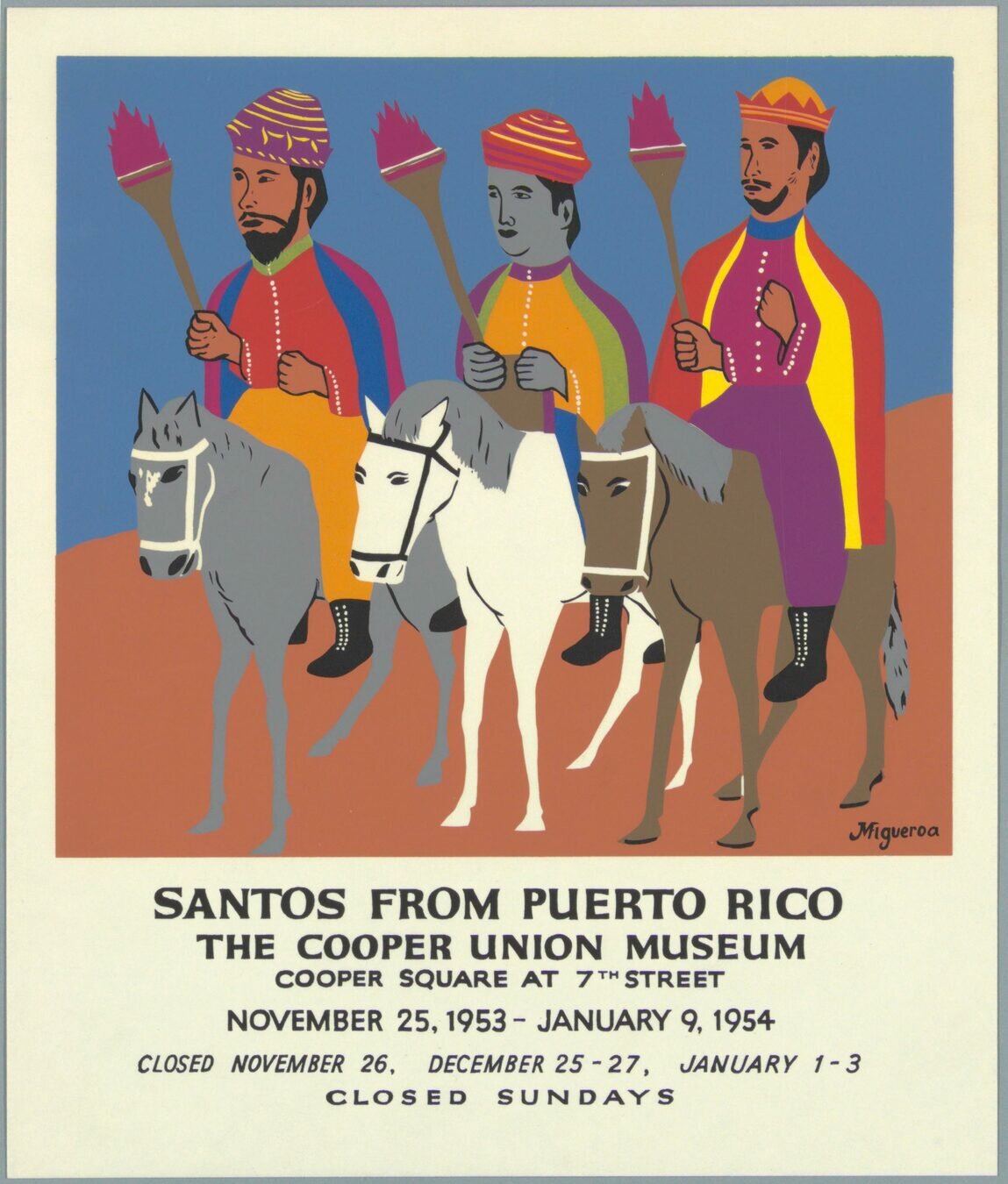

- The promesa, or "promise," involves calling upon saints to protect, cure, and offer spiritual guidance.
- In exchange, devotees offer prayers and often, aguinaldos as pagamento (payment or offering).
Fiesta de Reyes Scene: Promesas

In Puerto Rico, many promesas are celebrated around the 6th of January.

Guanica, Puerto Rico (vicinity). At a Three Kings' Eve Party in a Tenant Farmer's Home in the Sugar Country, photo by Jack Delano. Library of Congress, LC-USF34- 047544-D.
Artisan Artwork: Talla de Santos

These sculptures adorn altars in people’s homes, and are maintained with flowers, candles, and other gifts throughout the year, as part of promesa.

Promesas de reyes are associated with age old artistic traditions, such as talla de Santos—statues of saints and virgins that artisans carve out wood.


Above: Los Reyes Magos, by the Caban Group. Smithsonian American Art Museum.
Left: Los Tres Reyes Magos, by the Rivera Group. National Museum of American History.
Listening: "Promesa de Aguinaldo"

Lyrics:
La Virgen lavaba (the Virgin washed)
San Jose tendía (San Jose tended)
El niño lloraba (the child cried)
Joaquin lo meció (Joaquin rocked him)

Like the talla de santos, the aguinaldo is an age-old tradition that is very diverse and varies according to regional practice.
Music classroom connections:
Do you hear the call and response between soloist and chorus?
What instruments do you hear?
The lyrics in this example are sung throughout Latin America, and are believed to be some of the oldest existing examples of this tradition:

"Promesa de Reyes"
Watch this video of "Promesa de Reyes" in San German, Puerto Rico.

What do you notice about the music?
What do you notice about the environment and structure of this fiesta?
Promesa Papo Capín y Maelo Vázquez, video by Jaime O. Bofill-Calero.
Fiesta de Reyes Scene: Parranda, Trulla, and Asalto Navideño

The terms parranda (party, spree), trulla (fuss), and asalto navideño (Christmas assault) are synonymous. These terms refer to:
-
Puerto Rican Christmas caroling
- Aguinaldos are a key part of their repertoire
- They happen throughout the six-week Christmas season
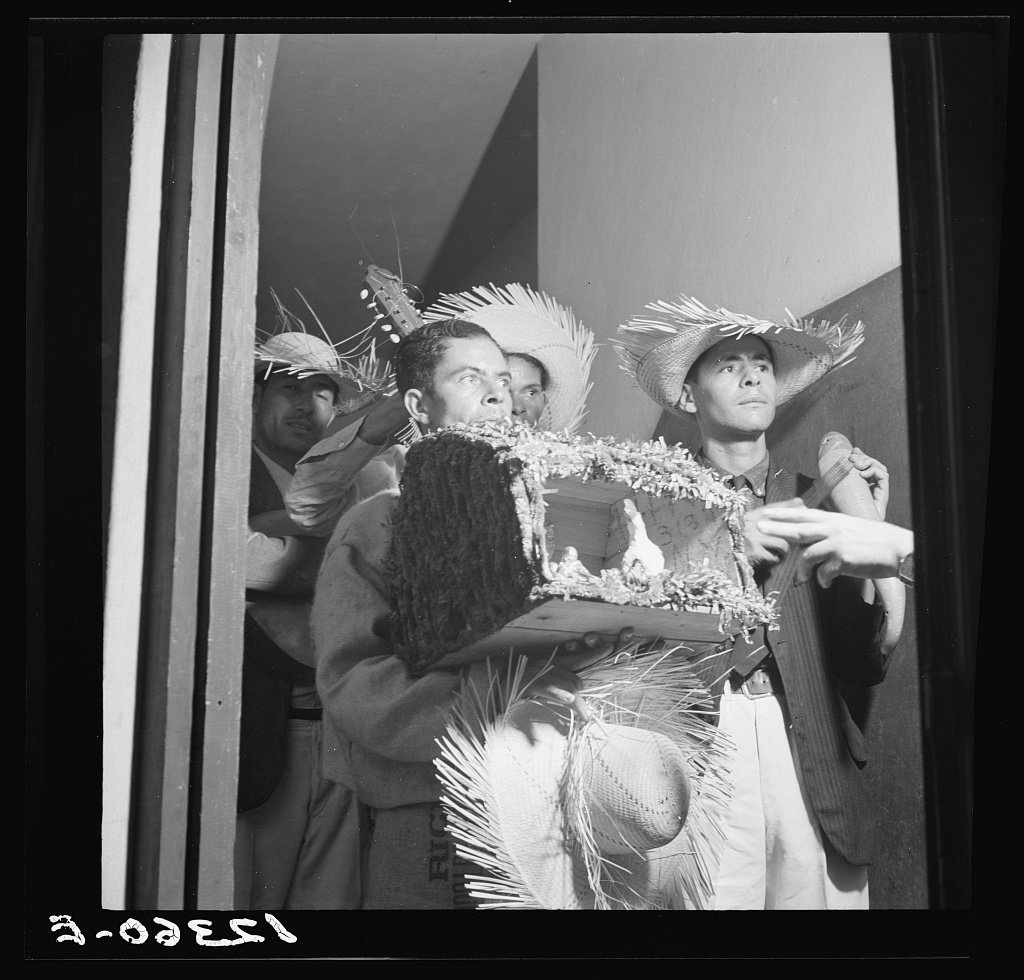

Three Kings Day, Wandering Musicians Carry a Primitive Creche From House to House and Sing for Pennies, In a Student's Boarding House, Rio Pedras, Puerto Rico, photo by Edwin Rosskam. Library of Congress, LC-USF34- 012360-E.
Parranda, Trulla, and Asalto Navideño

The term parranda can also refer to the group of Christmas carolers who performs spontaneous, raucous, late-night visits to friends’ homes during Christmas holidays.
Importantly, parranda / trulla / asalto navideño can be understood as a complex practice that creates social bonds and collective identity through partying, singing, eating and drinking.



"La Parranda Más Grande"
Watch and Listen to the first minute of "Parranda Más Grande de Puerto Rico."

This parranda takes place in the town of Trujillo.
It includes more than 100 participants.
Parranda Más Grande de Puerto Rico, video by Un Boricua Perdido.

Discuss: "La Parranda Más Grande"
- What do you think is going on in this video and where do you think this performance is taking place?
- Do you think this is a spontaneous performance or something more formally organized, or both?
- If you are familiar with this practice, how does this performance compare?
- Does this sound like Christmas music to you? Why or why not?

Watch "Parranda Más Grande de Puerto Rico" once again!
Surprise! Asalto Navideño

Surprise is an essential element in a parranda performance, which is why the unexpected act of strolling from house to house is known as an asalto (assault).
How is this performance similar or different to the previous example?
Watch an excerpt from another parranda performance in Puerto Rico.

Parranda Navideña en Puerto Rico 2018, video by Conciertos Latinos.

Puro Party! (More Fiestas)
The Fiesta de Reyes marks the beginning of the end of the Christmas season: schools reopen and work resumes on January 7.
-
But ... more fiestas are held from January 6–8!
-
This last set of fiestas in the Christmas season are called the Octavas (eighths): liturgical celebrations in remembrance of the Virgin Mary.


Adoracíon de los Reyes Magos, by El Greco, CC BY-SA 4.0, via Museo Soumaya and Wikimedia Commons.

Fiesta de Reyes Scene: Food!
Food is central to Christmas season fiestas.
- The lechón asado, (roasted pig) is the most traditional dish of the season:
- served on Nochebuena (Christmas Eve), Navidad (Christmas Day), and Fiesta de Reyes.

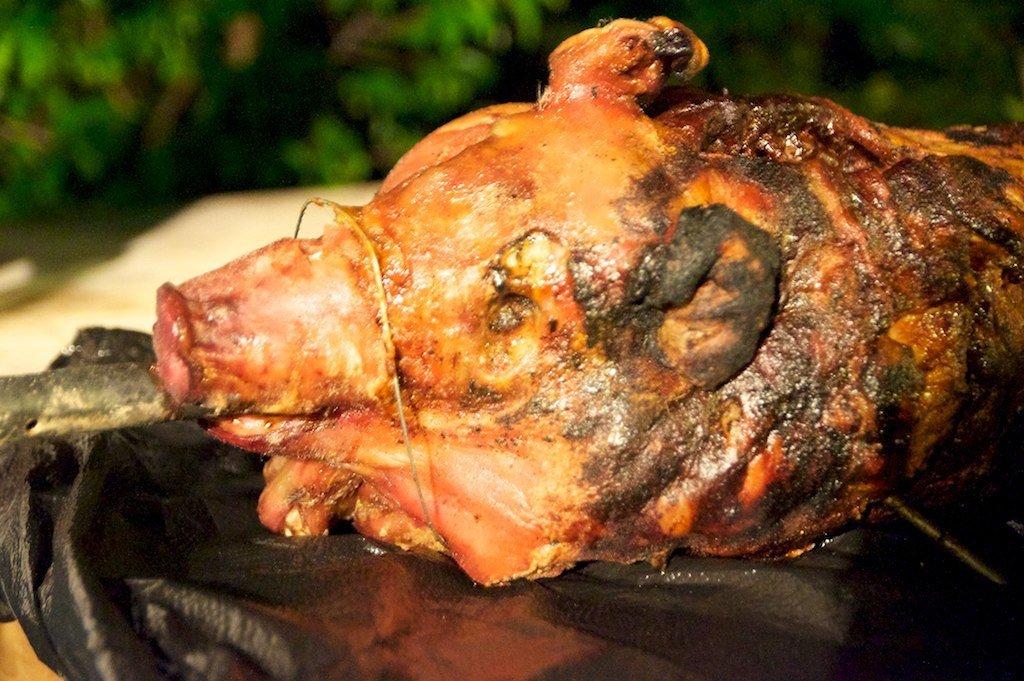
Lechón Asado, photo by Dr. Ronaldo Emmanuelli-Jiménez, CC BY-NC-ND 2.0, via Flickr.

Food and Fiestas
Food traditions create social bonds, gathering friends and family.
- Food is so essential to fiestas that many aguinaldos are about Puerto Rican dishes.
For example, the lyrics to "Si Me Dan Pasteles" say:
“If you give me pasteles they’d better be hot, because cold pasteles give people stomachache!”


Pasteles, by Portorricensis, Public domain, via Wikimedia Commons.

Food and Fiestas: Popular Puerto Rican Cuisine
Common beverages include, rum, pitorro (a homemade and very potent liquor made from sugar cane), and coquito (made from coconut milk, rum, milk, and cinnamon).

Other examples of Puerto Rican cuisine include arroz con gandules (rice with pigeon peas), arroz con dulce (a kind of rice pudding), and pasteles (mashed plantains filled with meat and wrapped in boiled banana tree leaves).
Roast Pork, Yucca with Mojo, Congri, and Plantains for Christmas Eve Dinner, 2013, photo by Cecilia Peterson. Smithsonian Folklife Magazine.
Click Image for Recipes!

Connections: Food and Fiesta
According to author Cecilia Peterson, “There’s a reason so many aguinaldos mention food: it’s what keeps everyone upright when they’re being dragged out of their beds for a month and a half."

Does your family have any special food traditions associated with celebrations?
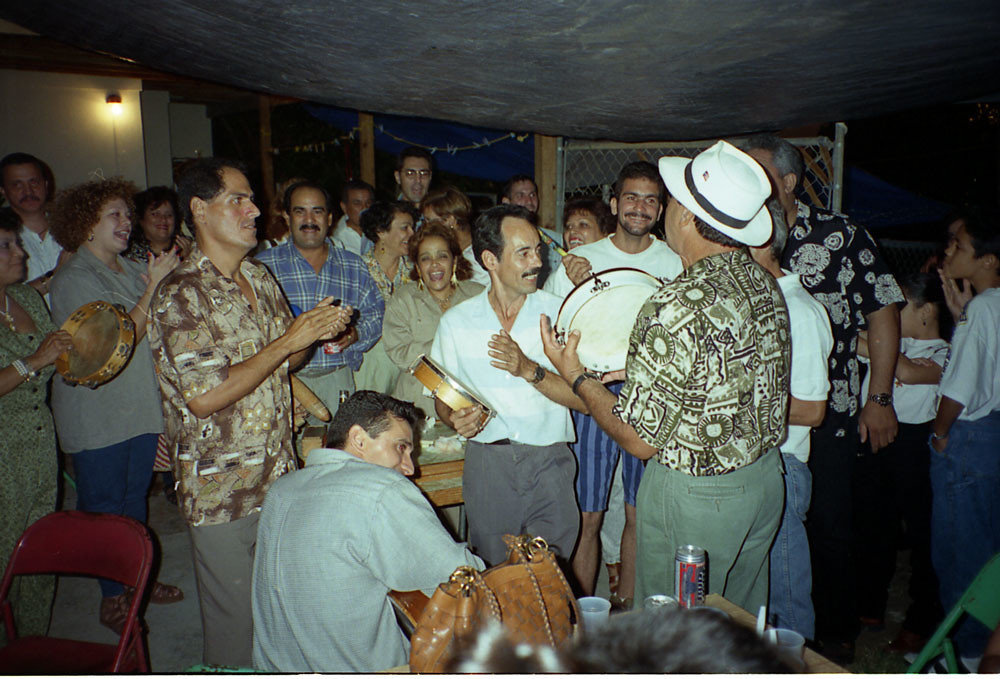
Puerto Rico, Tres Reyes, photo by Ard Hesselink. CC BY-NC-ND 2.0, via Flickr.

Learning Checkpoint
-
What is an aguinaldo?
-
What is the relationship between aguinaldos and Fiesta de Reyes?
-
What is parranda/trulla/asalto navideño? What is the social significance of this tradition?
- Why are so many aguinaldos written about food?

End of Path 1: Where will you go next?



Path 2

30+ minutes
Experiencing Aguinaldo

Los Reyes Magos, by the Caban Group. Smithsonian American Art Museum.

Aguinaldo: A Type of Christmas Song

Aguinaldo is:
- a type of song often performed during Christmas season festivities in Puerto Rico;
- sometimes performed by a parranda;
- associated with música jíbara;
- but can be performed in other genres (e.g., plena-aguinaldo).

Con Carlos y las Trullas, by Rafael Rivera Garcia. National Museum of American History.

What Is Música Jíbara?


Música Jíbara is:
- a broad term for Puerto Rican folk songs from mountain regions and rural areas
- an oral tradition
- a fusion of Taíno, Spanish, and African music
- influenced by Spanish poetic forms

Jíbaro Hasta el Hueso: Mountain Music of Puerto Rico, cover art by Marlow Palleja Design. Smithsonian Folkways Recordings.
Aguinaldo Origins - Villancicos

Aguinaldos have their origins in 15th century villancicos: songs and dance forms that developed in the Iberian Peninsula (Spain).
Listen to excerpts from two examples:
Villancicos: Spanish Christmas Songs for Children, cover art by Ronald Clyne. Smithsonian Folkways Records.
What musical characteristics do you notice?
"Esta Noche es Nochebuena"
"Canto de Aguinaldo"

Aguinaldo Origins - Villancicos

Charged with devotional and religious themes, villancicos were introduced into Catholic liturgical services on feast days, sung in cathedrals, monasteries, and other religious institutions.
Originally, villancicos were secular forms of music that addressed more rustic and popular themes, but in the mid- and late-16th century, they became prominent among composers of sacred music.

Villancicos in Latin America

Outside of its strict religious context, villancicos also became a part of popular culture in many Latin American countries.

Puerto Rican Catholic Church with Clock Tower, photo by John N. Choate. National Museum of Natural History.
The earliest performance on record of villancicos in Latin America dates to 1539, when they were performed in Catholic cathedrals in Mexico City and Puebla (Mexico), Lima (Perú), La Plata (Argentina), and Bogotá (Colombia).

The Puerto Rican Aguinaldo

The Puerto Rican aguinaldo developed within the villancico genre during the colonial period.
Vertical View of a Puerto Rican Cuatro, by Miguel Rodriguez. Photo 162779067 © Miguel Rodriguez | Dreamstime.com.
Although they are no longer used in strictly religious contexts, they are often sung to celebrate religious calendric occasions, such as Christmas and Advent.
In fact, the term aguinaldo has become synonymous with “Christmas carol” ... although its repertoire has expanded beyond nativity-related themes to include many other (often secular) subjects.


Aguinaldos' Poetic Form: Decimilla

Like villancicos, aguinaldos use poetic forms of Spanish origin to structure the composition.
- The most widely used is the decimilla, a variant of décima.
- Décima (ten-line stanza/octosyllabic) is used in several musical traditions in Latin America.
- The decimilla is a hexasyllabic stanza (ten lines of six syllables each).

Listening for Decimilla: "Fiesta en el Batey"

The decimilla is a hexasyllabic stanza (ten lines of six syllables each). This example is an excerpt from "Fiesta en el Batey," by Ecos de Borinquen.

"Fiesta en el Batey," by Ecos de Borinquen

Listening for Decimilla: "Fiesta en el Batey"

Hum/sing along with the first stanza of "Fiesta en el Batey." Develop familiarity with the melody.


Engaged Listening: "Fiesta en el Batey"

Can you identify the chord progression?

Listen to the first stanza of “Fiesta en el Batey” once more.
Blue Question Mark Icon, by Isarra, Public domain, via Wikimedia Commons.

Practice Playing the Chords (Enactive Listening)

I V I IV (repeat)
Try playing your chordal instrument (piano, guitar, ukulele, etc.) in the key of G: G, D, G, C - two beats per chord.
For a version that is slightly more difficult, try G, am, D, G, C.

Write Your Own Decimilla!

Using our example of decimilla structure, your own language, and the melody and chords of "Fiesta en el Batey":
Write and perform your own decimilla for an aguinaldo!

Aguinaldos and Other Poetic Forms

Listen to "Christmas Carol" and identify the copla form

"Christmas Carol - Aguinaldo," sung by Sofia and Ana Iris Parilla de Falu
Aguinaldos can also use coplas (couplets), organizationally arranged as stanzas (verses) and estribillos or refrains (chorus).

Aguinaldo's Local Idiosynracies

While featuring certain Spanish influences (such as poetic forms, rhyming schemes, and references to Catholicism), Puerto Rican aguinaldos have adopted local idiosyncrasies (i.e., ways of thinking and making music), and thus signal a gradual separation from old Spanish traditions and sources.
- Most importantly, aguinaldo in Puerto Rico is characterized by the fusion of European, African, and Taíno (Indigenous) influences. This idea is highlighted in Path 3.

Optional Listening: Different Varieties of Aguinaldo

If time allows, listen to excerpts from these examples from the Folkways catalog:
Throughout Puerto Rico there are many different varieties of aguinaldo, all with their own distinctive melodies and chords.
-
Sometimes, they are named after the towns they came from: aguinaldo cagüeño, aguinaldo lorenzillo, aguinaldo de costa, aguinaldo orocoveño, etc.
"Aguinaldo Cagüeño: Puerto Rican Song," recorded by The Trobador De La Montaña and the Puerto Rican Quartet
"Plegaria (Prayer) [aguinaldo mayagüezano]," recorded by Ecos de Borinquen
"Hospitalidad (Hospitality) [aguinaldo nuevo]," recorded by Ecos de Borinquen


Learning Checkpoint
- How are villancicos related to aguinaldos?
- What is the most common poetic form used to compose aguinaldos?
- What is the difference between décima and decimilla?
- What were the most rewarding and challenging parts of composing and performing your own decimilla?

End of Path 2: Where will you go next?





Path 3

20+ minutes


Programa de Navidad 1977, by Jose Melendez Contreras. National Museum of American History.
Instruments of Aguinaldo
Aguinaldo and Música Jíbara


Pava, unknown maker. National Museum of American History.
The aguinaldo is one of the most important types of música jíbara.
Jíbaros were originally the rural farmers of Puerto Rico. They were born from the racial mixing of the Indigenous Taíno, European, and African groups that coexisted on the island.
Like the jíbaros themselves, the aguinaldo is a cultural fusion of African, Indigenous, and European elements. As you will see in this component, this cultural blend is visible in the instruments that are often used to perform this music.

Puerto Rican Aguinaldos ...

- Often celebrate religious calendric occasions, such as Christmas and Advent (although some are about secular, everyday topics)
On their album, El Alma de Puerto Rico, Ecos de Borinquen performs several non-religious aguinaldos, such as "Fiesta en el batey" (track 13), and "Hospitalidad" (track 7).
- Are mostly sung in Spanish, but sometimes incorporate Taíno-influenced expressions (such as the Taíno name for Puerto Rico: Borinquen) and the aspirated “s” sound (African-influence)
- Are an important part of, but not exclusive to música jíbara (some are in the plena genre)


Listen to "Si Me Dan Pasteles" (“If They Give Me Pastries”).
Puerto Rican pasteles are a cornmeal–like food made of yucca root or banana, and one of the many African gastronomic influences introduced to Puerto Rico.
Pay close attention to the aspirated “s” sound of the words pastele(s) and caliente(s) one of the linguistic influences of African communities.


Pasteles, by Portorricensis, Public domain, via Wikimedia Commons.
Aguinaldos: Listening for African Influences
Aguinaldos: Listening for Voice as the Central Instrument

-
Broadly speaking, aguinaldos emphasize voice as the central instrument.
- They are sometimes performed a cappella (i.e., without instruments)
- But they are often accompanied by string instruments, drums, percussions, and/or “wind” instruments.


El Mito-D Beatriz, by Eduardo Vera Cortez. Archives Center, National Museum of American History.
Listen to "Aguinaldo (Año Nuevo) - New Year's Carol," sung by Sofia and Ana Iris Parilla de Falu
The Orquesta Jíbara (Chordophones)

Aguinaldo chordophones include the guitar and three guitar-like instruments: the bordonúa, tiple, and cuatro, which are known collectively as the orquesta jíbara.

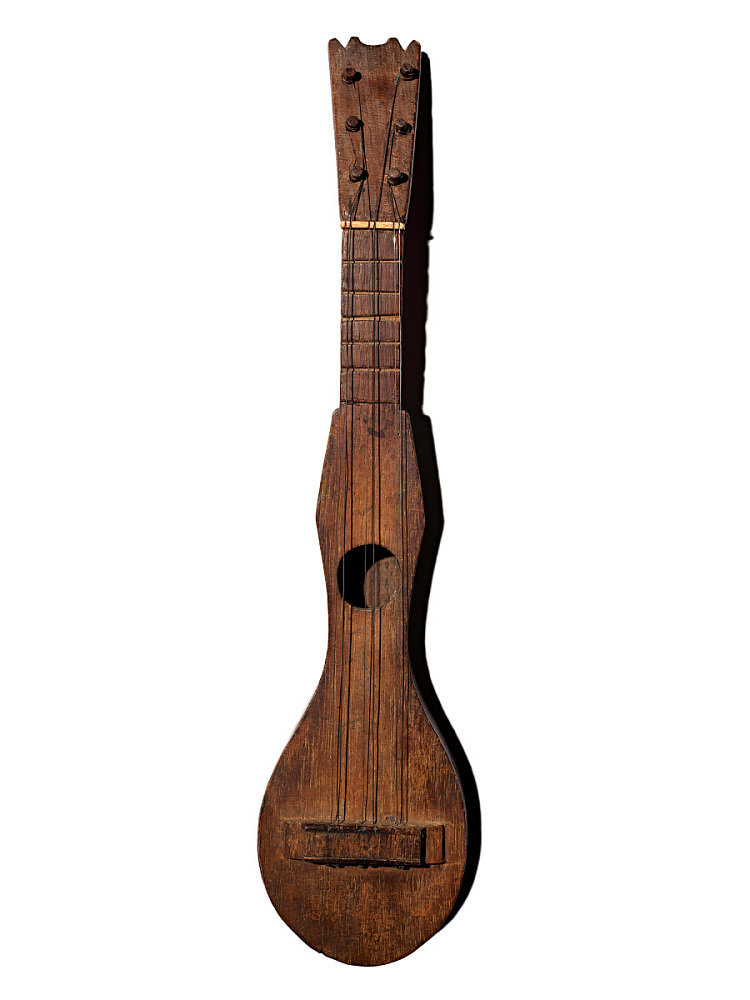
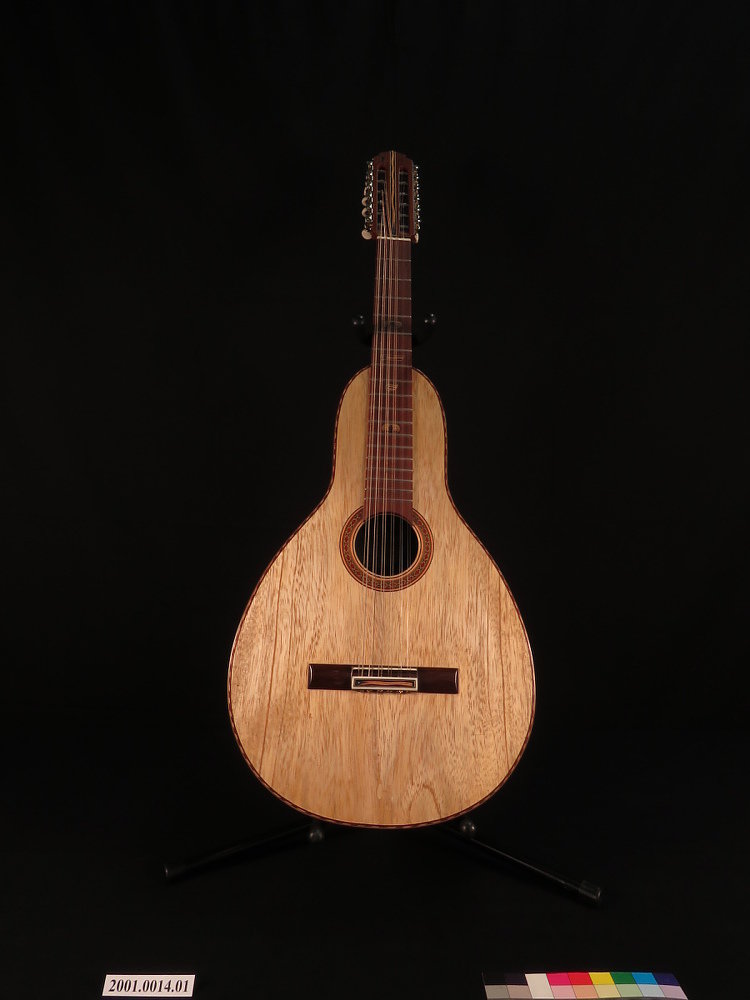
Bordonúa, made by Rafael Avilés Vázquez. National Museum of American History.
Tiple, unknown maker. National Museum of American History.
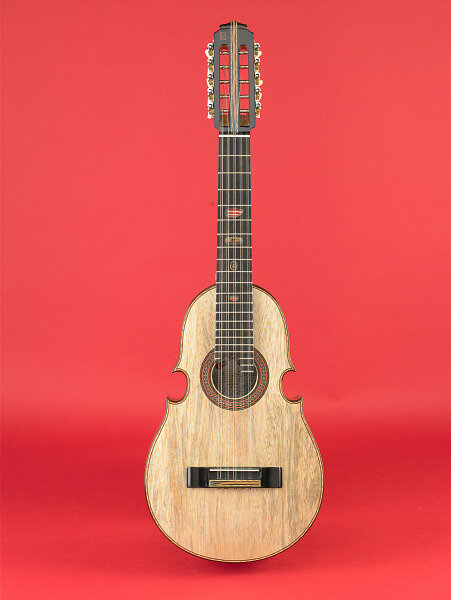
Avilés Vázquez Cuatro, by Avilés Vásquez. National Museum of American History.
Attentive Listening: "El Cuatro"


The cuatro is the national instrument of Puerto Rico. Modern cuatros have five courses of double strings.
"El Cuatro" [Live Performance Video], feat. Ecos de Borinquen. Smithsonian Folkways Recordings.

Avilés Vázquez Cuatro, by Avilés Vásquez. National Museum of American History.
Listening for the Tiple: "Aguinaldo de Baquiné"


Listen to an excerpt from “Aguinaldo de Baquine.”
What other instruments do you hear?
Can you pick out the higher-pitched sounds of the tiple?

Adding Context: Aguinaldo and Ritual

Although aguinaldo is most associated with the Christmas season, it is used in other ritualistic contexts throughout the year.
For example, the song you just heard would be performed at a baquiné, a funeral ritual that celebrates and honors the death of a newborn child.

Optional: Listen again to determine the lyrical structure.
Integrating Visual Art: Francisco Oller's "El Velorio"

Francisco Oller’s painting “El Velorio” (The Funeral) is a magnificent recreation of baquiné.

As you study the painting, what do you notice?
What can this painting tell us about baquiné?

El Velorio, by Francisco Oller. Colección Museo de Historia, Antropología y Arte de la Universidad de Puerto Rico.
Aguinaldo Percussion: Güiro and Maracas


Maracas
- played in pairs
- shaken
- made from leather, wood, or plastic



Güiro
- Pre-Columbian (Taíno)
- scraped
- puyero: special pick (scraper)
Güiro, unknown maker. National Museum of American History.
Maracas, unknown maker. National Museum of American History.
Puyero de Güiro, unknown maker. National Museum of American History.
Aguinaldo Percussion: Cowbell, Pandero, and Barril de Bomba


Cowbell
- hand-held, metal
- used in salsa music
LP Cowbell, made by Latin Percussion, Inc. National Museum of American History
Pandero, made by Jesus Cepeda. National Museum of American History.
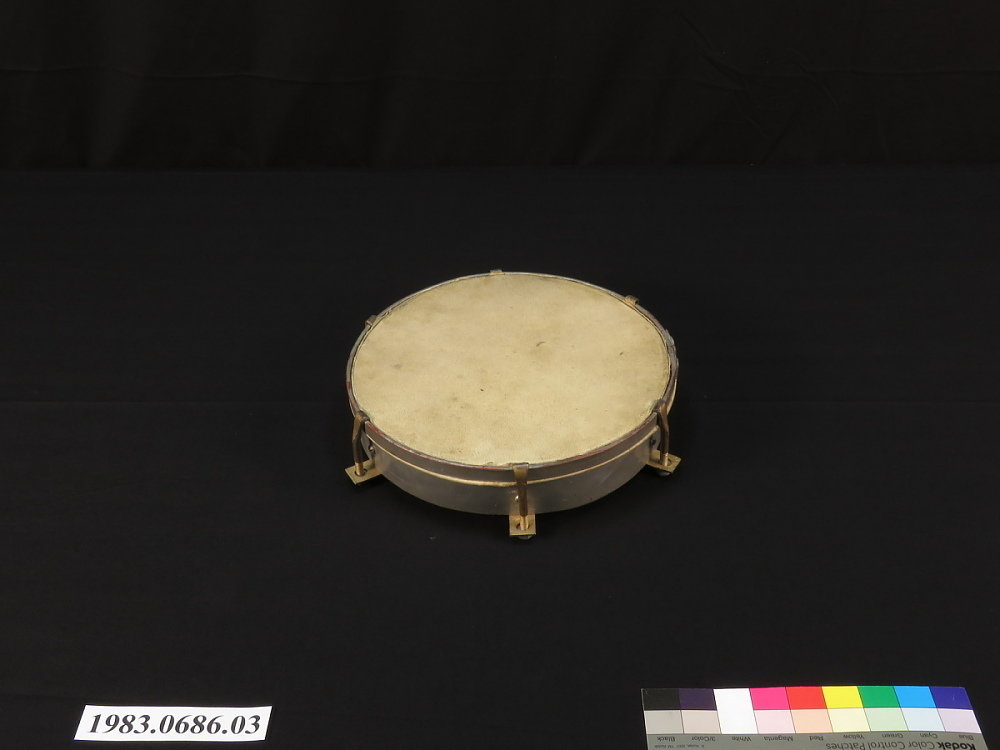
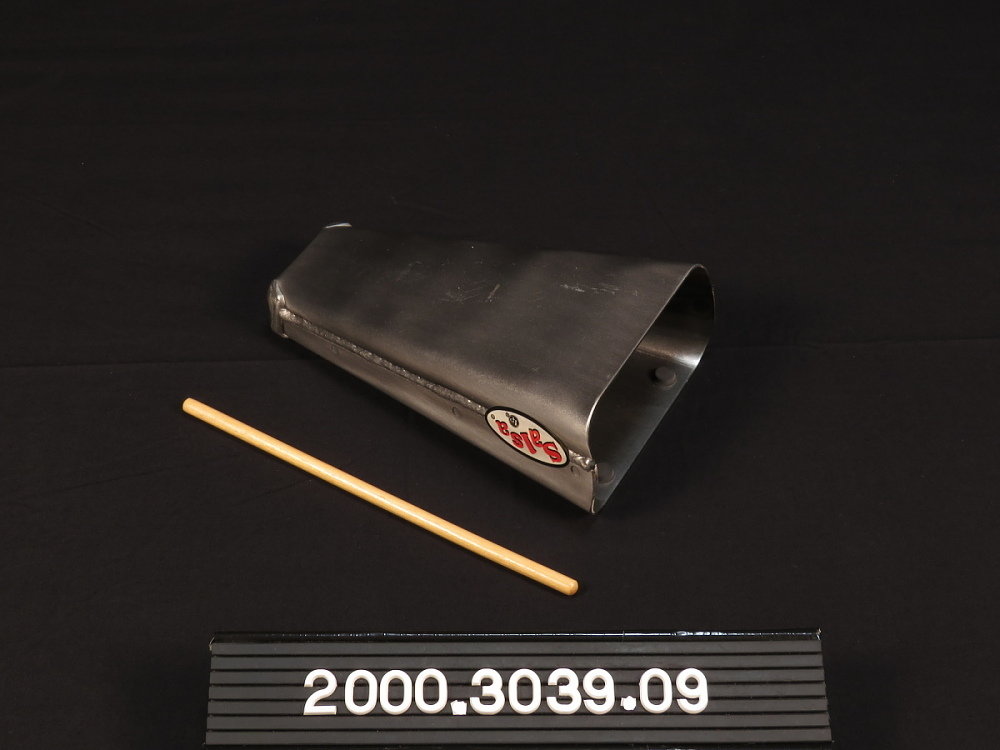
Pandero
- handheld jingle-less tambourines
- used in plena music
Barril de Bomba (bomba barrel)
-
single-headed
-
wooden-cask drum
-
used in bomba music
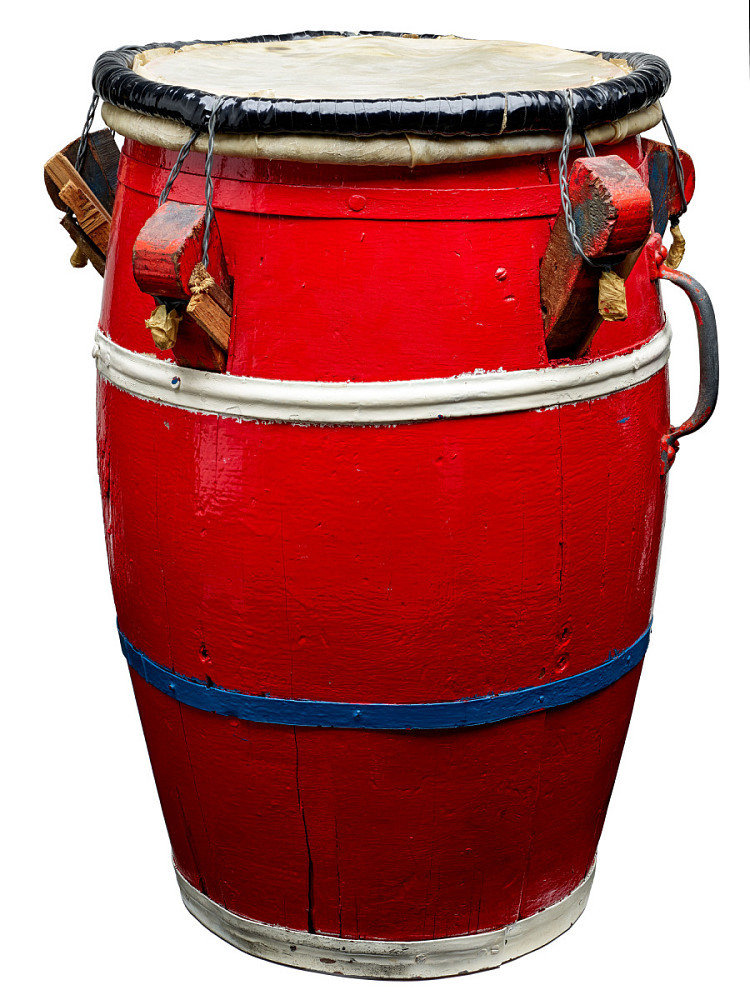
Bomba Drum, unknown maker. National Museum of American History
Aguinaldo: Listening for Instruments


What instruments can you identify?
Watch an excerpt (at least 1–2 minutes) from this performance of aguinaldo in Puerto Rico.
Parranda Navideña en Puerto Rico 2018, uploaded by Conciertos Latinos.

Learning Checkpoint
- What are the some cultural influences of aguinaldos?
- In what contexts are aguinaldos performed in Puerto Rico?
- What instruments are associated with the performance of aguinaldos in Puerto Rico?

End of Path 3 and Lesson Hub 3: Where will you go next?






Lesson 3 Media Credits

Audio courtesy of
Kacho Montalvo Ethnographic Recordings
Library of Congress
Smithsonian Folkways Recordings
Video courtesy of
Jaime O. Bofill-Calero
Conciertos Latinos
Smithsonian Folkways Recordings
Un Boricua Perdido
Images courtesy of
Cooper Hewitt, Smithsonian Design Museum
Library of Congress
National Museum of American History
Smithsonian American Art Museum
Smithsonian Folklife Magazine
Smithsonian Folkways Recordings

© 2023 Smithsonian Institution. Personal, educational, and non-commercial uses allowed; commercial rights reserved. See Smithsonian terms of use for more information.
This project received Federal support from the ... administered by the Smithsonian ....
For full bibliography and media credits, see Lesson 3 landing page.





